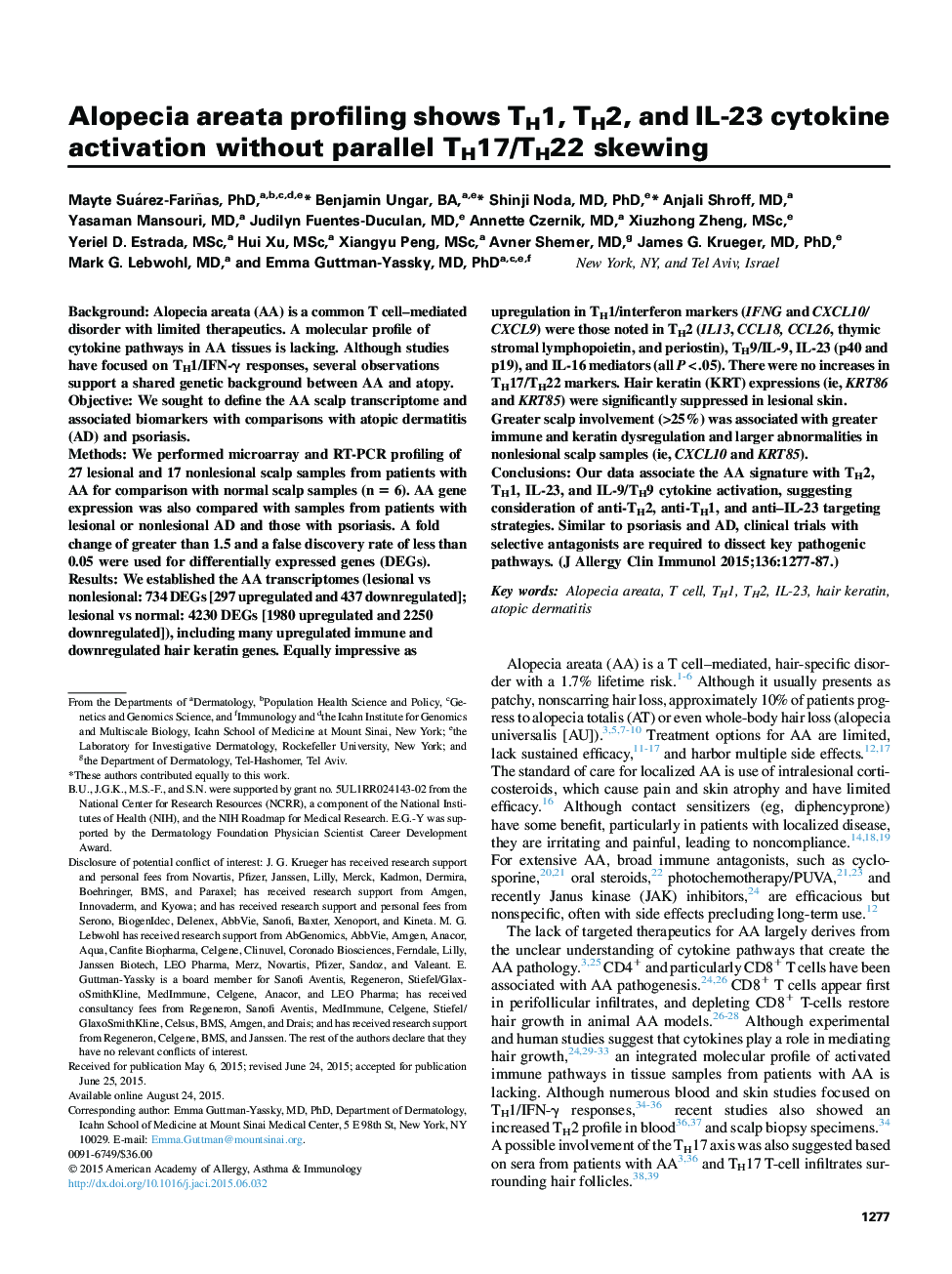| Article ID | Journal | Published Year | Pages | File Type |
|---|---|---|---|---|
| 6063239 | Journal of Allergy and Clinical Immunology | 2015 | 11 Pages |
BackgroundAlopecia areata (AA) is a common T cell-mediated disorder with limited therapeutics. A molecular profile of cytokine pathways in AA tissues is lacking. Although studies have focused on TH1/IFN-γ responses, several observations support a shared genetic background between AA and atopy.ObjectiveWe sought to define the AA scalp transcriptome and associated biomarkers with comparisons with atopic dermatitis (AD) and psoriasis.MethodsWe performed microarray and RT-PCR profiling of 27 lesional and 17 nonlesional scalp samples from patients with AA for comparison with normal scalp samples (n = 6). AA gene expression was also compared with samples from patients with lesional or nonlesional AD and those with psoriasis. A fold change of greater than 1.5 and a false discovery rate of less than 0.05 were used for differentially expressed genes (DEGs).ResultsWe established the AA transcriptomes (lesional vs nonlesional: 734 DEGs [297 upregulated and 437 downregulated]; lesional vs normal: 4230 DEGs [1980 upregulated and 2250 downregulated]), including many upregulated immune and downregulated hair keratin genes. Equally impressive as upregulation in TH1/interferon markers (IFNG and CXCL10/CXCL9) were those noted in TH2 (IL13, CCL18, CCL26, thymic stromal lymphopoietin, and periostin), TH9/IL-9, IL-23 (p40 and p19), and IL-16 mediators (all P < .05). There were no increases in TH17/TH22 markers. Hair keratin (KRT) expressions (ie, KRT86 and KRT85) were significantly suppressed in lesional skin. Greater scalp involvement (>25%) was associated with greater immune and keratin dysregulation and larger abnormalities in nonlesional scalp samples (ie, CXCL10 and KRT85).ConclusionsOur data associate the AA signature with TH2, TH1, IL-23, and IL-9/TH9 cytokine activation, suggesting consideration of anti-TH2, anti-TH1, and anti-IL-23 targeting strategies. Similar to psoriasis and AD, clinical trials with selective antagonists are required to dissect key pathogenic pathways.
